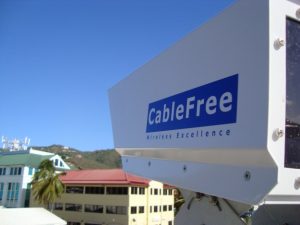Introduction: A Primer to Free Space Optics

Free Space Optics (FSO), also called Optical Wireless (OW), Free Space Photonics, Infrared, Laser Link – refers to the transmission of modulated visible or infrared (IR) beams through the atmosphere to obtain broadband communications. FSO systems can function over distances of several kilometres. As long as there is a clear line of sight between the source and the destination, and enough transmitter power, communication is theoretically possible.
Like fibre, FSO uses lasers to transmit data, but instead of enclosing the data stream in a glass fiber, it is transmitted through the air. Unlike the wireless systems of the past, FSO is all-optical, so you get the speed of fiber without the substantial costs of digging up sidewalks to install a fiber link. FSO technology requires no government licensing and can be readily deployed within hours of the availability of line-of-sight access. This means no hassles, no backlog and no intermediary devices to the fiber backbone.
Available FSO systems offer capacities in the range of 100 Mbps to 2.5 Gbps, and lab research systems report data rates beyond 160 Gbps. These systems are compatible with a wide range of applications and markets, and they are sufficiently flexible as to be easily implemented using a variety of different architectures.
Basic Principle of FSO

If you understand how an infrared remote-controller on your TV works, you basically understand free space optics (FSO). FSO transmits invisible, eye-safe light beams from one “telescope” to another using low power infrared lasers in the terahertz spectrum, where capacity can reasonably be expected to reach 10 Gbps. The light beam carries whatever optical transmission signal (layer 2 or MAC) and protocol framing a manufacturer chooses to market, typically SONET/ATM and 10/100/1000 Ethernet. Products targeted for access circuits typically support rates from T1 to 2.5 Gbps.
Straightforward to Deploy
FSO requires no licenses, has repeatedly demonstrated a rapid time to deployment, and has a low cost per bit compared to fixed wireless or the already discounted alternative of laying new fibre.
As an example, a CableFree system can be installed on tripods, indoors, in less than 15 minutes using CableFree’s simple and elegant alignment system. More importantly, installs won’t be delayed, blocked, or cancelled because the landlord won’t cooperate in time to meet the customer’s needs.
Complete range of FSO Products
Point-to-point FSO systems are available in various bandwidths, are protocol-, topology-, and architecture-transparent, and can be used in numerous applications, according to customer needs. The most common applications are campus and last-mile connectivity, backhaul for PCS and Wi-Fi networks, route-diversity for mission critical links and temporary deployments. Specialist applications include video and broadcast networks, connectivity for remote PBX shelves and distributed cellular antenna systems.
In each case, the FSO link replaces a fiber connection with a free space optics link. All CableFree products operate at Layer 1 so there are no issues connecting to any piece of internetworking equipment, be it a switch, a router, a multiplexer or other hardware. Currently available CableFree™ products operate from 1Mb/s upto 1.5Gb/s and provide connectivity options for all speeds in between, including E1/T1, E3/DS3/STS-1, Fast Ethernet, OC3 TM/SONET, 270-540Mb video, OC12 ATM/SONET and Gigabit Ethernet, as well as custom/proprietary interface speeds.
Using CableFree products Service Providers, Cellular Operators and Enterprises can provide high speed communications quickly, affordably and with no impact to either their existing customer premises and metro network equipment or their management systems
For Further Information
For more information on this Primer for Carrier Class FSO, please Contact Us
You must be logged in to post a comment.